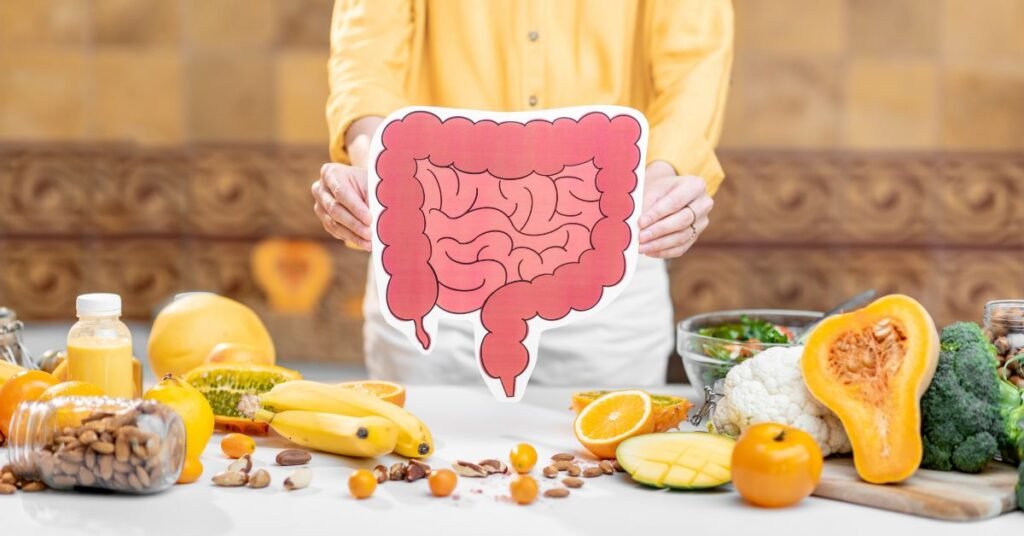The Mediterranean diet is usually considered one of the healthiest diets in the world. Traditional Mediterranean eating patterns emphasize fruits, vegetables, herbs, olive oil, legumes, whole grains, nuts, and spices. The risk of numerous health problems, such as heart disease, diabetes, metabolic syndrome, and various malignancies, can be lowered with this dietary pattern.
There has been growing interest in making the Mediterranean diet healthier by emphasizing plant-based foods. This has given rise to the green Mediterranean diet.
What is the Green Mediterranean Diet?
The green Mediterranean diet is a primarily plant-based take on the traditional Mediterranean diet. It encourages even higher consumption of fruits, vegetables, whole grains, and plant proteins while limiting the consumption of animal products, including red meat.
Like the traditional Mediterranean diet, the green Mediterranean diet is high in antioxidants, fiber, healthy fats, and anti-inflammatory compounds. Focusing on plants provides abundant vitamins, minerals, and protective phytochemicals.
Some key characteristics of the green Mediterranean diet are:
- Emphasizes fruits, vegetables, nuts, legumes, whole grains, and seeds
- Utilizes olive oil as the primary source of fat
- Includes low-to-moderate amounts of fish, eggs, yogurt, and cheese
- Limits red meat and processed meats
- It avoids added sugars and refined grains
- Focuses on home-cooked meals made from scratch
This plant-highlighting approach makes the diet lower in saturated fat and higher in beneficial nutrients than the traditional Mediterranean diet. The additional fiber can also enhance feelings of fullness and support weight loss.

Benefits of the Green Mediterranean Diet
Research suggests that following a green Mediterranean diet offers impressive benefits for health and longevity. Here are some of the top evidence-based benefits:
Supports Heart Health
The green Mediterranean diet provides heart-healthy fats, fiber, and antioxidants, which help reduce cholesterol levels and blood pressure. Studies show that diet can lower heart disease risk by 30% or more. The emphasis on plants over red meat also appears beneficial for heart health.
Reduces Risk of Diabetes
Multiple studies link the Mediterranean diet with better blood sugar control and a 30–40% lower risk of developing type 2 diabetes. Going green may offer even more protection, as high vegetable intake is strongly associated with reduced diabetes risk.
Aids Weight Loss
The green Mediterranean diet can be an excellent choice for weight management. Its high fiber and plant protein content help improve satiety. At the same time, its low energy density makes it easy to eat fewer calories without feeling hungry. Studies confirm that green Mediterranean eating patterns can promote healthy weight loss.

May Extend Lifespan
The traditional green Mediterranean diet has been associated with increased longevity, and preliminary research suggests the green version may offer even more significant anti-aging benefits. The high antioxidant content is believed to combat cellular aging.
Protects Brain Health
A Mediterranean-style diet benefits the brain by reducing oxidative stress, inflammation, and insulin resistance. The green version further supports brain health by providing omega-3 fatty acids, polyphenols, and B vitamins required for optimal cognitive function.
Supports Gut Health
The green Mediterranean diet contains an array of prebiotic plant foods that feed beneficial gut bacteria. It limits red meat, which can negatively impact microbial diversity. A healthy gut microbiome has several benefits, including reduced inflammation, improved immunity, and lower disease risk.

Provides Cancer Protection
The Mediterranean diet has been found to minimize the risk of certain cancers, such as colon, prostate, and breast cancer. Maximizing plant foods may offer further protection thanks to antioxidants and compounds like lignans and lycopene, which suppress tumor growth.
Critical Components of the Green Mediterranean Diet
No single “correct” way to follow the green Mediterranean diet exists. However, making sure to include the following components regularly will help maximize its health-protective effects:
Abundant Fruits and Vegetables
Aim for 7–10 servings of produce daily. Focus on color variety to ensure you get diverse phytonutrients. Good choices include leafy greens, berries, tomatoes, citrus fruits, cruciferous vegetables, onions, mushrooms, and more.
Whole Grains
Choose whole grains like oats, brown rice, quinoa, barley, and farro instead of refined grains whenever possible. Whole grains provide more fiber, protein, and micronutrients than refined grains.
Healthy Fats
Get most fats from plant sources like olive oil, avocados, nuts, and seeds. Omega-3-rich fats are also encouraged in fatty fish, walnuts, and flax. Limit saturated fats from meat and dairy.

Legumes and Soy Foods
Regularly incorporate beans, lentils, chickpeas, peas, and soy products like tofu and tempeh for plant-based protein, fiber, and nutrients. These also act as prebiotics to nourish gut bacteria.
Herbs, Spices and Garlic
Use herbs, spices, and garlic liberally to add flavors and antioxidant/anti-inflammatory compounds without adding calories, sugar, or salt. Turmeric, cinnamon, rosemary, oregano, basil, and ginger are health-promoting.
Plant Proteins
Get protein from plants like legumes, nuts, seeds, whole grains, and minimally processed soy instead of animal proteins whenever possible. Limit red meat and processed meats, which are linked to adverse health impacts.

Fermented Foods
Include something fermented daily, like yogurt, kefir, sauerkraut, kimchi, or kombucha, which provide probiotics to optimize gut health. Choose unsweetened, full-fat dairy, if including yogurt.
Optional Fish and Poultry
You can include modest amounts of fish and poultry. Stick to 2 servings or less weekly, emphasize fatty fish for omega-3s, and choose organic, pasture-raised whenever possible.
Plenty of Water
Keep yourself well hydrated by drinking plenty of water. Herbal teas, broth-based soups, and stews also contribute to fluid intake. Limit sugary beverages.
Physical Activity
Physical activity is advised regularly as part of the green Mediterranean lifestyle. Aim for 150 minutes per week of moderate exercise, like brisk walking.
Sample One-Week Green Mediterranean Diet Meal Plan

Here is an example of what one week on the green Mediterranean diet could look like:
Monday
Breakfast: Avocado toast with poached egg and grapefruit
Lunch: Big green salad with chickpeas, nuts, olive oil, and lemon dressing
Dinner: Veggie and bean chili, brown rice, Greek yogurt with berries
Snacks: Apple with almond butter, carrots with hummus
Tuesday
Breakfast: Overnight oats with chia seeds and almond milk, topped with banana and walnuts
Lunch: Lentil vegetable soup, whole grain bread, mixed green salad
Dinner: Tofu vegetables stir-fried with brown rice
Snacks: Sliced pear with pecans, edamame
Wednesday
Breakfast: Tofu scramble with peppers, onions, and spinach. Side of melon.
Lunch: Grilled tempeh sandwich with hummus, lettuce, and tomato on whole grain bread. Clementine orange.
Dinner: Sheet pan-roasted salmon with Brussels sprouts and sweet potato
Snacks: Roasted chickpeas, apple with nut butter

Thursday
Breakfast: Green smoothie with banana, spinach, avocado, and collagen peptides
Lunch: Grain bowl with farro, roasted vegetables, sunflower seeds, and tahini dressing
Dinner: Vegetarian chili, brown rice, salad
Snacks: Celery with cashew butter, raspberries
Friday
Breakfast: veggie omelet with onion, pepper, and spinach. Grapefruit.
Lunch: Quinoa tabbouleh salad with chickpeas, cucumber, tomato, and parsley
Dinner: Baked eggplant Parmesan over whole grain pasta. Steamed broccoli.
Snacks: Kale chips, orange
Saturday
Breakfast: Overnight chia oats with plant milk, topped with berries and shredded coconut
Lunch: Dolmas and Greek salad
Dinner: Burrito bowl with rice, beans, salsa, and guacamole
Snacks: Hummus with raw veggies, trail mix with nuts and dried fruit

Sunday
Breakfast: Tofu scramble with veggies. Side of melon.
Lunch: hearty vegetable and white bean soup. whole-grain roll.
Dinner: green curry with tofu. Brown rice and steamed greens.
Snacks: Sliced pears with pecans, carrot sticks with tahini dipping sauce
Tips for Transitioning to the Green Mediterranean Diet
Switching to a greener Mediterranean-style diet doesn’t have to happen overnight. Making gradual changes can ensure long-term sustainability. Here are some tips to make the transition easier:
- Start by increasing plant proteins like beans, lentils, and tofu while decreasing red meat and processed meats. Have meatless meals more frequently.
- Load your plate with more vegetables and fruits. Make salads and roasted or sautéed veggies daily staples.
- Experiment with new herbs, spices, and seasonings to enhance the flavors of plant foods without adding salt or sugar.
- Find convenient whole-grain options like pre-cooked brown rice or frozen quinoa to substitute for refined grains.
- Choose healthy fats like olive and avocado oil instead of butter—snack on nuts and seeds instead of chips or sweets.
- Drink more water and herbal tea instead of sugary drinks.
- Gradually reduce dairy and eat more plant-based options like unsweetened yogurt and non-dairy milk.
- Plan meals ahead of time so healthy choices are readily available. Do meal prep if it is helpful.
- Fill your kitchen with green Mediterranean diet staples to make more nutritious meals effortless.

Conclusion
Transitioning to a greener Mediterranean-style diet centered around plants offers tremendous benefits for lifelong health, longevity, and weight management. Abundant produce, whole grains, legumes, nuts, and healthy fats establish the foundation for intelligent, satisfying eating patterns. With some simple shifts, it’s easy to reap the wellness advantages of the green Mediterranean diet.
In summary, the green Mediterranean diet:
- Emphasizes fruits, legumes, vegetables, whole grains, nuts and healthy fats
- Limits red meat and processed foods
- Provides anti-inflammatory and antioxidant-rich plant foods
- Aids weight loss and maintenance
- Reduces risk of chronic illnesses like heart disease, diabetes and cancer
- Supports brain, gut, and immune health
- It may help extend lifespans by combating cellular aging.
Switching to a greener, more plant-based Mediterranean diet can be an advantageous lifestyle change. Follow the diet’s guiding principles, make gradual, steady changes, and enjoy the lifelong health benefits.
What are the key differences between the traditional and green Mediterranean diets?
The green Mediterranean diet emphasizes plant foods and limits red meat and animal products more than the traditional Mediterranean diet. It encourages higher consumption of fruits, vegetables, whole grains, legumes, nuts, and plant proteins.
What are some plant-based protein options on the green Mediterranean diet?
Good plant-based protein options include:
Legumes like beans, lentils, and chickpeas.
Soy foods like tofu and tempeh
Nuts, seeds, and their butter
Whole grains like quinoa and buckwheat.
Vegetables like spinach, asparagus, and artichokes
Do you need to be a vegetarian or vegan to follow the green Mediterranean diet?
No, you do not need to eliminate animal products. The diet encourages limiting red meat and eating more plant proteins. Still, it includes healthy fish, eggs, yogurt, and cheese.
How is olive oil healthy since it is high in fat?
While high in fat, olive oil provides beneficial monounsaturated and polyunsaturated fats. Its antioxidant content can help reduce inflammation. Consuming it moderately as part of the Mediterranean diet is considered heart-healthy.
What are some tips for adding more plant foods to your diet?
Mix half of your plate with fruits and veggies at each meal; enjoy plant protein at least three meals daily; choose whole grains like quinoa or brown rice instead of white varieties; and snack on nuts and seeds instead of chips.
How does the green Mediterranean diet support weight loss?
The diet is high in satiating protein, fiber, and healthy fats. It has a low energy density, so you can eat plenty of food for fewer calories. Plant foods increase post-meal satisfaction and digestion compared to animal foods.
How much and what kind of fish can you eat on the green Mediterranean diet?
Limit fish intake to no more than two servings per week. Focus on fatty fish like salmon, sardines, and mackerel for omega-3s. Choose sustainably caught, low-mercury fish when possible.
Can you drink alcohol on this diet?
In moderation, as traditional Mediterranean diets include. Limit to 1 glass of red wine daily with meals to gain antioxidants from grapes. Avoid excessive intake, which causes health risks.






